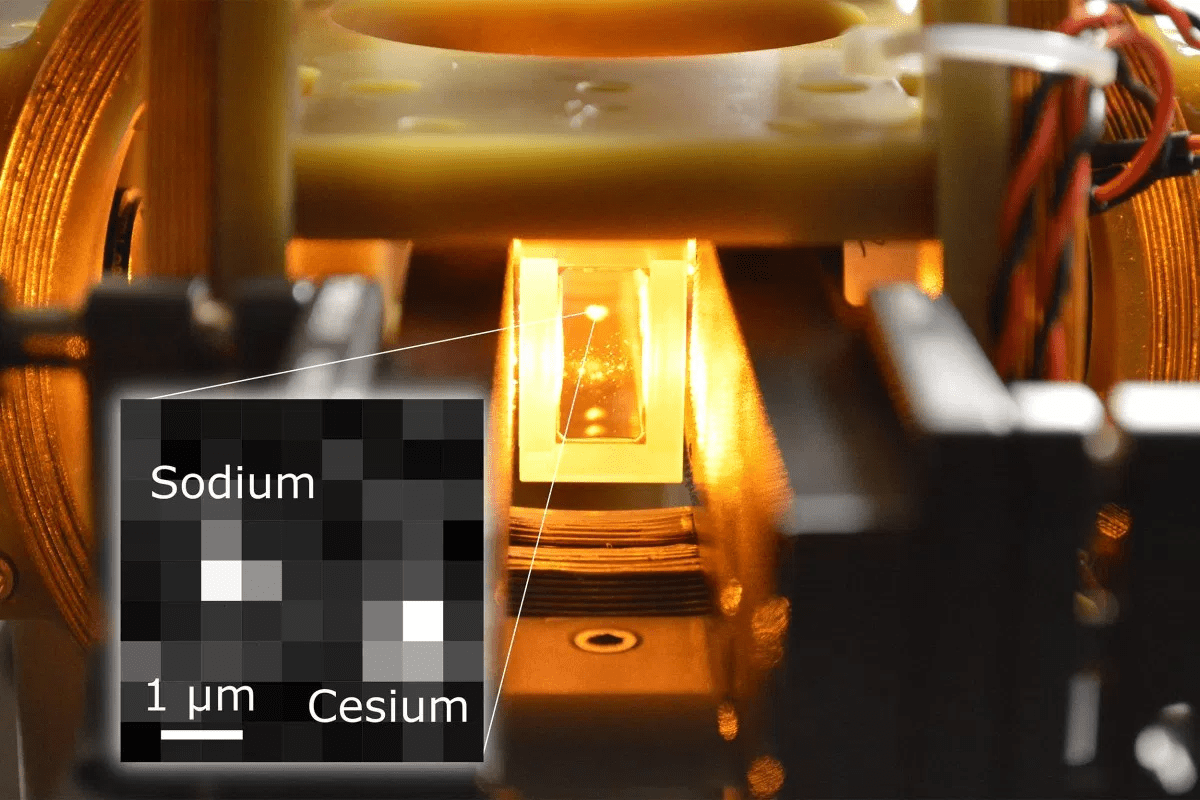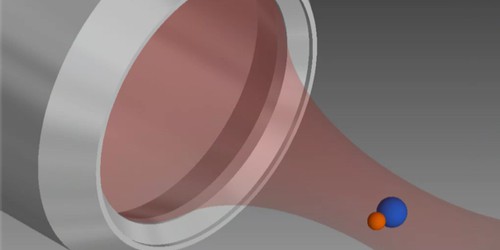Researchers at Harvard University in the US have used optical tweezers to create a single molecule from a single pair of atoms. The technique they employed, known as magnetoassociation, made it possible to create the molecule in a specific, reversible, quantum state. The work is thus an important step towards creating low-entropy samples of molecules for applications in quantum computing and quantum simulation.
In their experiment, researchers led by Kang-Kuen Ni confined a sodium (Na) atom and a caesium (Cs) atom at the centre of an optical trap formed by focusing a laser beam to an intense spot. They then converted the trapped atoms into a molecule by ramping up the ambient magnetic field. “In this process [magnetoassociation], the resulting quantum state of the molecule is entirely determined by the state of the initial atoms,” explains study lead author Jessie Zhang. “By carefully preparing the initial atomic states, we can create the molecule in specific motional and internal states.”
Simply put, this means that if the atoms are all prepared in their lowest motional state, the molecule that forms will also be in its lowest motional state. If, on the other hand, the atoms are carefully prepared in an excited motional state, the molecule formed is rotationally excited.
Improving on earlier methods
The magnetoassociation method has previously been employed to create molecules in various other cold-atom systems, Zhang says, but these were generally larger ensembles containing more atoms. While the lifetime of the molecules thus produced was sometimes much longer than in the current work, it proved more difficult to control the molecules individually. “Our work builds on this previous research and expands it to form single molecules from single pairs of atoms in optical tweezers,” Zhang tells Physics World.
The new technique also improves on two earlier methods demonstrated by Ni and her team. In their first study, the researchers used a laser to bind a pair of atoms into an excited molecular state through a process called photoassociation. In the second, they used a pair of laser beams to convert an atom pair into a weakly-bound molecule. Both efforts had drawbacks, Zhang says. “In the first method, the excited molecule decayed into a large number of states that we couldn’t detect and in the second, the laser beam destroyed the molecule it formed,” she explains. In contrast, the molecules created by magnetoassociation live long enough to be dissociated back into atoms in their original states, and subsequently detected.

Optical tweezers create a single molecule from two atoms
Weak bonds
The molecules formed in the new study, which is detailed in Physical Review Letters, are, as yet, only weakly bound. Among other implications, the weakness of the bond between the atoms means that the molecules do not possess a large electric dipole moment – a necessary condition for quantum computing applications that require entanglement between the atoms’ quantum states. To overcome this problem, Ni and colleagues say they will attempt to bring the molecules into their absolute ground state, where they are more stable and can interact with each other via dipole-dipole interactions.
As well as producing entangled molecules, the team also hope to scale up their technique. “At present, we only have one molecule in a single tweezer, but the idea is to scale up to multiple tweezers, each holding a single molecule that we can individually control,” Zhang says. “We can then envision using such a system as a quantum computer or quantum simulator.”
